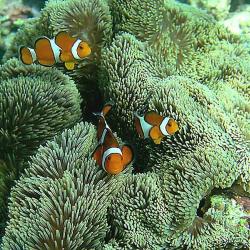Source Institutions
Source Institutions
Add to list Go to activity
Activity link broken? See if it's at the internet archive

In this activity, learners discover which plants and animals have symbiotic relationships and how this impacts each organism. Learners explore the advantages and disadvantages of different types of symbiosis.
- Under 5 minutes
- 45 to 60 minutes
- 1 cent - $1 per group of students
- Ages 8 - 14
- Activity, Game, Lesson/Lesson Plan
- English
Quick Guide
Materials List (per group of students)
- Poster, overhead, or PowerPoint presentation of different symbiotic relationships
- 5 pairs of cards of two organisms with a mutualistic relationship; each card has one organism (p.9-10 of PDF)
- 5 pairs of cards of two organisms with a parasitic relationship; each card has one organism (p.5-6 of PDF)
- 5 pairs of cards of two organisms with a commensal relationship; each card has one organism (p.7-8 of PDF)
Subjects
-
Life Sciences
-
Diversity of Life
- Plants
- Animals
- Protists and Fungi
-
Ecology
- Ecosystems
- Populations
-
Diversity of Life
Informal Categories
- Animals
- Games
- Nature and Environment
Audience
To use this activity, learners need to:
- see
- read
Learning styles supported:
- Involves hands-on or lab activities
Other
Components that are part of this resource:
Includes alignment to state and/or national standards:
Includes assesments for student learning:
This resource is part of:
Access Rights:
- Free access
By:
- Lord, Josh
Rights:
- All rights reserved, University of Oregon, Oregon Institute of Marine Biology, 2005
Funding Sources:
- National Science Foundation, 0338153
- National Science Foundation, 0638731
